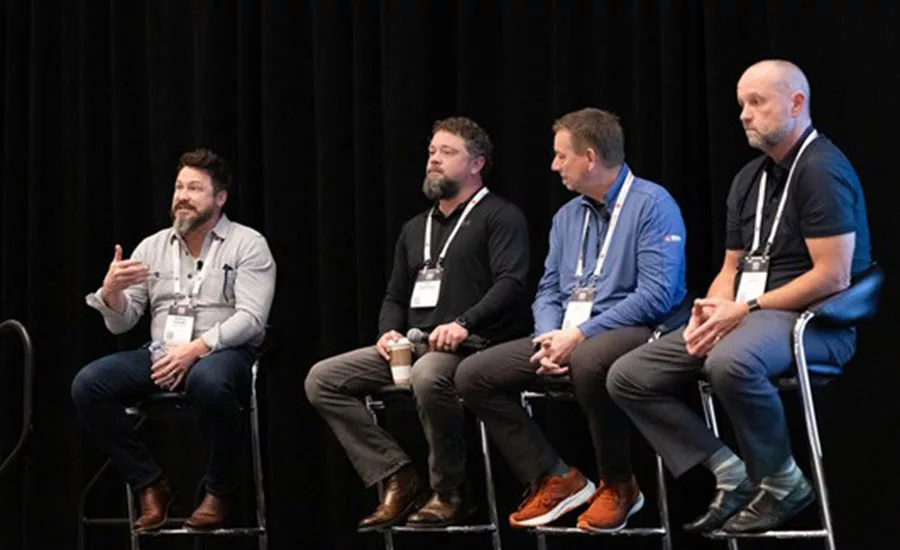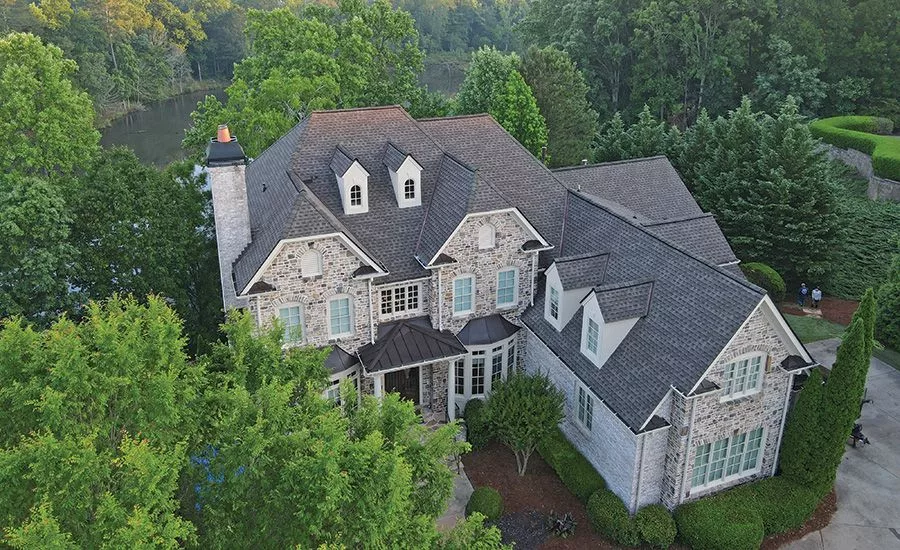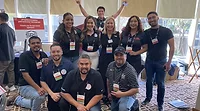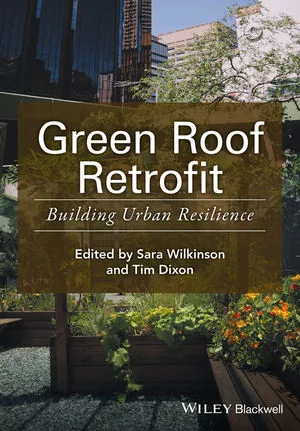Sustainability
Transforming Urban Cityscapes: A Vegetated Roofing Solution in the Heart of Pittsburgh
David L. Lawrence Convention Center rooftop terraces stand as a testament to the potential of green infrastructure and urban resilience
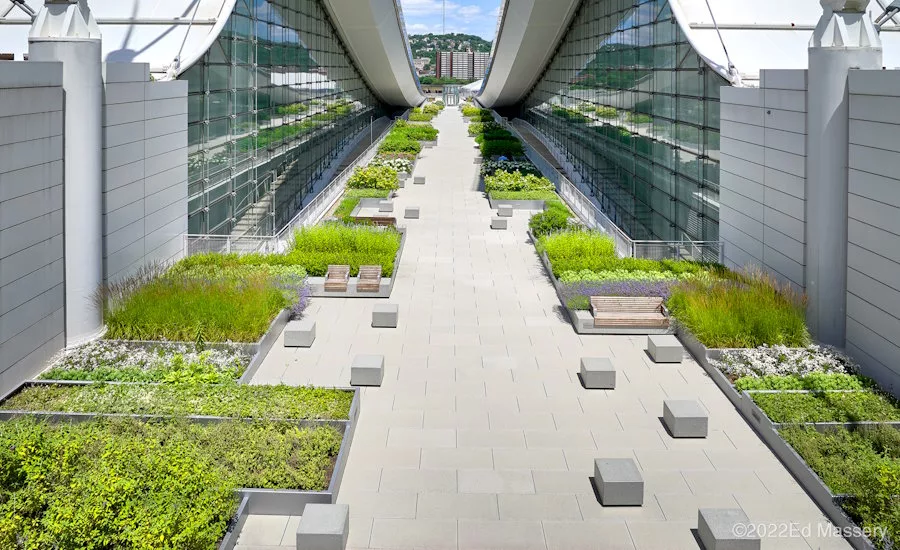
Photos courtesy of Siplast.
In urban environments, municipalities are looking at ways to combat climate threats through long-term, sustainable solutions. As climate challenges intensify — with record-breaking storms and rising temperatures — building owners and architects are reimagining overlooked spaces, like rooftops, to provide results.
Vegetated roofing has emerged as a powerful solution, transforming surfaces traditionally used to simply keep a building dry into living, breathing ecosystems that offer far more than aesthetic appeal. These innovative green roof systems provide critical environmental benefits, from managing stormwater runoff and reducing urban heat to improving air quality and supporting local biodiversity.
Renovating an Acclaimed Convention Center
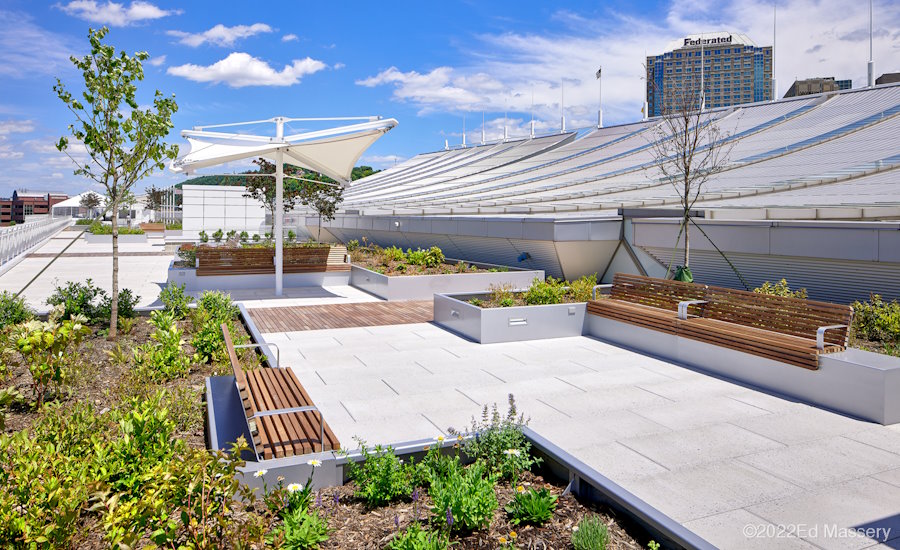
David L. Lawrence Convention Center's ownership sought a roofing solution to resolve water intrusion while transforming terraces into multifunctional spaces.
The David L. Lawrence Convention Center in Pittsburgh, completed in 2020, stands as a pioneering example of this urban rooftop transformation. This 1.5-million-square-foot facility — which hosts over 200 events and welcomes approximately 600,000 visitors annually — was groundbreaking from the start, becoming the first convention center in the United States to earn the U.S. Green Building Council’s LEED Gold certification. Despite its initial acclaim, the center faced a significant challenge that would lead to a remarkable reinvention of its rooftop spaces.
Just a few years after its opening, the convention center experienced persistent water intrusion and leakage issues on its rooftop terraces. These problems compromised the functionality and aesthetic appeal of what could have been valuable outdoor spaces. Rather than simply applying a quick fix, the ownership saw an opportunity for a comprehensive reimagination of the roof areas.
The David L. Lawrence Convention Center's ownership aimed to create inviting outdoor retreats that would provide convention attendees with a biophilic respite from indoor events and an opportunity to soak up the city from a different vantage point. They sought a roofing solution that would resolve water intrusion and transform the terraces into multifunctional, sustainable spaces that connected visitors with nature.
After years of phased renovations, the David L. Lawrence Convention Center team turned to Pittsburgh-based architecture firm Indovina Associates Architects to spearhead the rooftop terrace redesign. The architectural firm pursued a partner with expertise in waterproofing, vegetated roofing, and amenity systems. Siplast, a leader in high-performance roofing and waterproofing solutions, emerged as the candidate, bringing a portfolio of innovative roofing solutions — all from a single manufacturer — and a strong local reputation. The company's approach stood out for its comprehensive, integrated strategy that could address the complex challenges of the project.
A Comprehensive Vegetated Roofing and Amenity Strategy
.jpg)
The building team opted for three-inch pavers instead of standard two-inch versions, providing enhanced stability and load-bearing capabilities.
The renovation began in April 2019 and was more than a simple repair project. It represented a holistic approach to urban infrastructure that prioritized environmental performance and user experience. The rooftop was transformed into a multi-layered system that could host guests and help alleviate urban environmental challenges.
The project's complexity required innovative thinking. Challenges were uncovered at every turn during construction. From the condition of the existing slab to the unexpected status of the existing joints, the building team had to align with Indovina Associates Architects to design as the project progressed.
The structure of the building, designed to mimic Pittsburgh's iconic bridges, presented additional structural challenges. Cables extending 80 to 90 feet above the plaza deck needed regular maintenance, requiring a paving system that could support maintenance utilities without damage. With additional consultation from Hanover Architectural Products, a manufacturer of hydraulically pressed concrete pavers, the building team opted for three-inch pavers instead of standard two-inch versions, providing enhanced stability and load-bearing capabilities that would withstand the demanding environment.
The contractors, with guidance from the experts at Siplast, implemented a multifaceted approach for the rooftop space. The resulting plan utilized nearly every integrated roofing solution that Siplast offers. Pedestrian traffic areas received a reinforced traffic coating system designed to withstand heavy use while providing durability and safety. A specialized flashing system was implemented to manage water runoff effectively, solving previous drainage issues. Modified bitumen roofing systems were applied to service station roofs, ensuring long-lasting protection.
For the amenity spaces, concrete and wooden pavers complement the rooftop terrace’s design, while vegetated roofing elements contribute to both the aesthetic and environmental goals of the project. In vegetated roof areas, layered assemblies were installed to support agriculture and greenery. Siplast assisted Indovina Associates Architects and the building team from start to finish, from determining the best solutions to aiding in proper execution.
Sustainability and Design Excellence
.jpg)
In vegetated roof areas, layered assemblies were installed to support agriculture and greenery.
The renovation stands as an ideal example of the integration of modern urban sustainability goals. Vegetated roof areas feature carefully designed layered assemblies that support agricultural elements, intensive growing media, and advanced drainage systems. This helps with stormwater management, contributes to the city’s biodiversity, and helps lessen the heat island effect.
While many municipalities across North America — including Toronto, Chicago, and New York City — are implementing green roofing mandates, there are other benefits, including financial, to incentivize building owners to invest in vegetated roof systems, driving owners to include vegetated roofs on their projects. Increased roof membrane life expectancy, stormwater management, and increased property values are chief among the reasons building owners are opting to integrate vegetated roofs.
Today, the David L. Lawrence Convention Center rooftop terraces stand as a testament to the potential of green infrastructure and urban resilience. What was once a problematic roof now serves as a multifunctional space that provides environmental benefits, creates recreational opportunities, and demonstrates the possibilities of sustainable urban design.
Looking for a reprint of this article?
From high-res PDFs to custom plaques, order your copy today!
.webp?height=96&t=1745421784&width=96)
